Need a New Lacrosse Stick This Season. Learn How to Pick the Best OneNeed a New Lacrosse Stick This Season. Learn How to Pick the Best One
Determine Your Position – Midfield, Attack, Defense?
So you’re in the market for a new lacrosse stick this season. I feel you – picking out new gear is always an exciting time. But with so many styles and options to choose from, it can also be downright confusing trying to select the perfect stick. Well, take a deep breath and grab a pinnie, because Coach is here to walk you through the process step-by-step.
The very first thing you need to think about is what position you play. Are you a midfielder, attacker, or defender? The type of lacrosse stick you’ll want can vary quite a bit depending on your role on the field. As a general rule, midfielders need an all-around stick that’s decent at everything. Attackers prefer sticks optimized for shooting and passing, with deep pockets that really hug the ball. Defenders need a stick with a wider head optimized for checking, scooping, and outlet passes.
Length Matters – Consider a Long or Short Shaft
The length of the shaft is another key consideration. Attackers and midfielders generally use sticks with 30-32 inch shafts, which allows for quick stick handling and snapshot shooting. Defenders tend to use longer shafts in the 52-72 inch range, which provide more reach for poking checks, scooping ground balls, and controlling an opponent’s crosse.
Longer poles give you more whip on clears and help you leverage opponents on body checks. Shorter sticks are quicker and allow tighter stick work. So weigh how much speed vs. power you want before picking a shaft length.
Attack Sticks are Offensively Minded

If you’re an attacker, you’ll want a stick engineered for precision passing, quick release shooting, and ball retention. Look for a curve and pocket depth that hugs the ball, channeling all your force into pinpoint shots. A narrower head shape can focus your ball control and passing accuracy. You’ll also want softer mesh for excellent hold on cradling. Consider strings like nylon/polyester blends in a mid to deep pocket style.
When shooting, make sure the head gives good rebound response and scoop. Avoid extra wide heads – they may help with checking, but sacrifice some ball control. Go for a contour and balance that really accentuates the whip on your shot.
Defensive Lacrosse Sticks Excel at Checking
For defenders, a wider lacrosse head with a stiff sidewall is ideal for in-game checks like pokes, slaps, and wraps. Look for a head with a flat/angular scoop, which makes popping the ball out on checks easier. The wider your head, the more surface area you’ll have for checking. But don’t go too overboard on width – you still need decent ball handling for quick outlet passes after securing a turnover.
Since you’re not shooting as much, focus on picking a head and mesh optimized for ground ball scooping. A softer pocket can help secure 50/50 balls. Just make sure your pocket isn’t so deep that scooping and passing is difficult.
Midfield Sticks Offer a Balance of Skills

As a midfielder, you need be a jack of all trades – able to transition quickly from offense to defense. So look for a head shape and width that gives you solid checking abilities, but also retains enough ball control and feel for shooting, passing, and cradling up field. Unless you’re a specialized offensive or defensive midfielder, you’ll want something right down the middle.
Consider mesh and stringing that aren’t too soft or too stiff. Shoot for something with decent hold that also releases cleanly. Go for a pocket depth somewhere between an attacker and defender so you can succeed at give-and-gos as well as ground ball scoops.
Pick an Appropriate Head Size – Wider or Narrower
In general, attackers use narrower heads for precision passing and shooters, defenders use wider heads for poke checks and ball denial, and midfielders balance the two. But head widths generally range on a spectrum from narrow to wide, so dial in on the exact width you need.
Measured at the widest point of the sidewall, offensive players generally use heads 5-6 inches wide. Defensive players go for wider 6-8 inch heads typically. Midfielders will be somewhere in between usually.
Wider heads have a bigger sweet spot and are more forgiving when stringing. Narrower heads allow tighter overall ball control.
Offset or Straight Head Shape – Angled for Scooping
Attack Sticks: Precision and Control
Attackers require sticks designed for accurate passing, quick-release shooting, and superior ball retention. The focus is on maximizing offensive capabilities.
- Head shape: Narrower for enhanced ball control
- Pocket depth: Deep for better ball hugging
- Shaft length: 30-32 inches for quick stick handling
- Mesh type: Soft for excellent hold during cradling
Do you play attack? Look for a stick with a curve and pocket depth that channels all your force into pinpoint shots. Consider strings like nylon/polyester blends in a mid to deep pocket style. Avoid extra-wide heads, as they may sacrifice ball control for checking ability.
Defensive Sticks: Reach and Checking Power
Defenders need sticks optimized for checking, scooping, and making outlet passes. The emphasis is on disrupting the opponent’s offense and transitioning the ball quickly.
- Head shape: Wider for increased checking surface
- Pocket depth: Shallower for easier ground ball scooping
- Shaft length: 52-72 inches for extended reach
- Mesh type: Stiffer for secure checks and quick ball release
As a defender, should you prioritize width or control? While a wider head provides more surface area for checking, don’t go overboard. You still need decent ball handling for quick outlet passes after securing a turnover. Aim for a balance between checking ability and control.

The Impact of Shaft Length on Playing Style
Shaft length significantly influences your playing style and effectiveness on the field. Different positions benefit from varying shaft lengths, affecting reach, control, and power.
Short Shafts: Speed and Maneuverability
Short shafts, typically 30-32 inches, are favored by attackers and midfielders. They offer several advantages:
- Enhanced stick handling and ball control
- Quicker release for passing and shooting
- Improved maneuverability in tight spaces
- Better suited for dodging and evading defenders
How does a short shaft impact your shooting? The reduced length allows for faster shot release and more precise control, making it easier to execute quick snapshots and accurate passes in tight situations.
Long Shafts: Reach and Power
Long shafts, ranging from 52-72 inches, are primarily used by defenders. They provide distinct benefits:
- Extended reach for poke checks and intercepting passes
- Increased leverage for body checks
- More power on clears and long passes
- Advantage in ground ball situations
Can a longer shaft improve your defensive game? Absolutely. The extended reach allows you to disrupt opponents from a greater distance, while the additional leverage helps in controlling opposing players and winning ground ball battles.

Decoding Head Shapes and Sizes for Optimal Performance
The shape and size of your lacrosse stick’s head play a crucial role in determining your effectiveness on the field. Different head characteristics suit various playing styles and positions.
Head Width: Finding the Sweet Spot
Head width affects ball control, checking ability, and overall stick performance:
- Narrow heads (5-6 inches): Preferred by attackers for precise ball control
- Medium heads (6-7 inches): Ideal for midfielders, balancing control and checking
- Wide heads (7-8 inches): Favored by defenders for improved checking and ball interception
How does head width affect your game? A narrower head allows for tighter ball control and more accurate passing, while a wider head provides a larger sweet spot for checks and ground balls. Consider your position and playing style when choosing the optimal width.
Offset vs. Straight Heads: Scooping and Control
The offset of a lacrosse head refers to the angle between the scoop and the throat of the head. This feature impacts ground ball scooping and overall ball control:
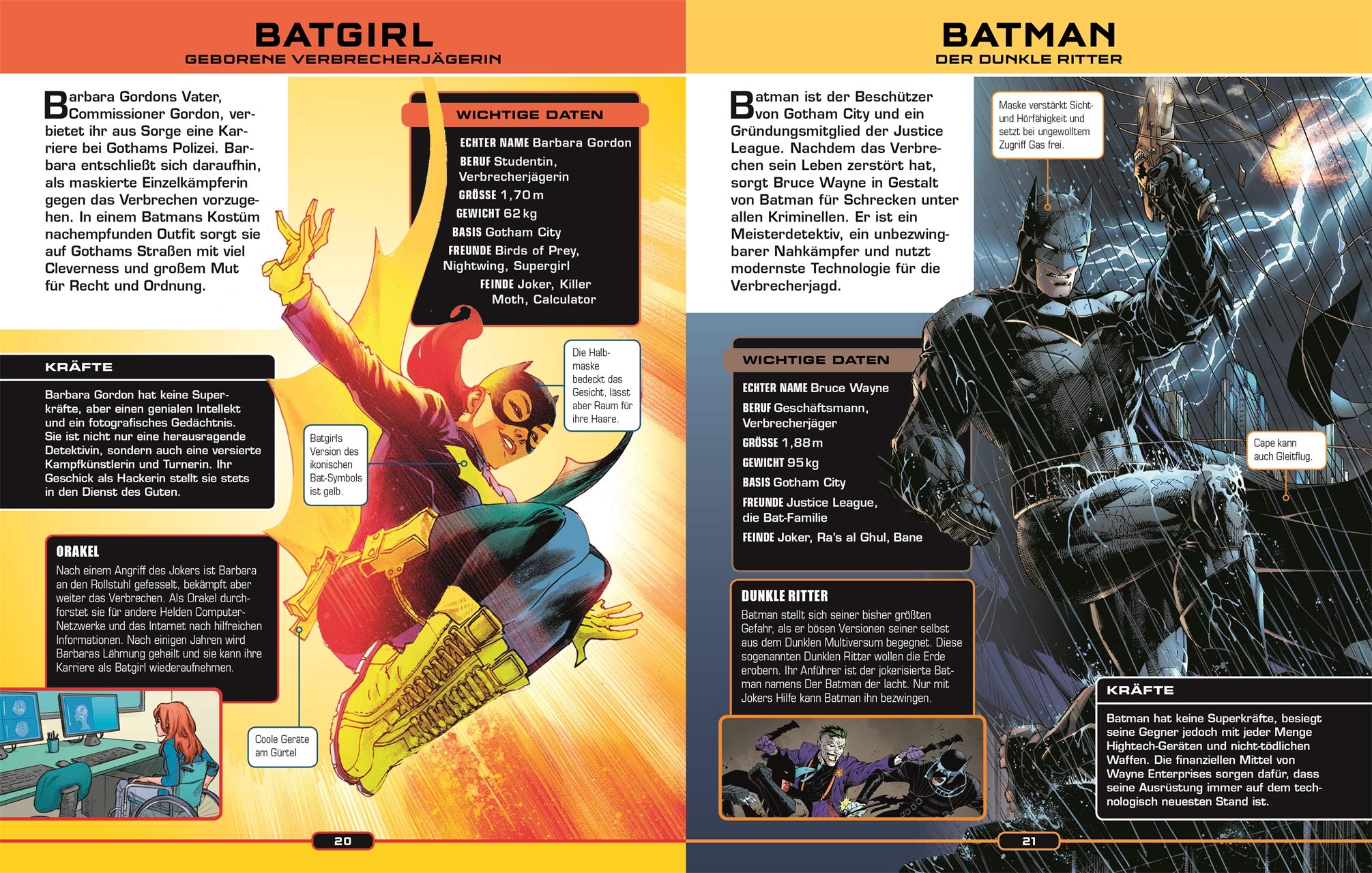
- Lower offset: Easier ground ball scooping, beneficial for defenders and midfielders
- Higher offset: Improved ball control around the center, appealing to offensive players
- Straight heads: Balance between scooping and control, versatile for all positions
Should you choose an offset or straight head? Consider your primary responsibilities on the field. If you frequently engage in ground ball battles, a lower offset might be preferable. For players focused on ball control and shooting, a higher offset could be advantageous.
Mesh Types and Stringing: The Key to Ball Control
The mesh and stringing of your lacrosse stick significantly impact ball control, hold, and release. Understanding different mesh types and stringing techniques can help you optimize your stick for your playing style.
Soft vs. Hard Mesh: Finding the Right Feel
Mesh hardness affects ball hold, release, and overall feel:
- Soft mesh: Excellent ball hold, popular among attackers
- Semi-soft mesh: Good balance of hold and release, suitable for midfielders
- Semi-hard mesh: Quick release, preferred by some defenders
- Hard mesh: Consistent in wet conditions, favored by some players in all positions
Which mesh type is right for you? Consider your position and personal preferences. Soft mesh offers better ball feel and control but may sacrifice some consistency in release. Hard mesh provides a more consistent release but may lack the “feel” some players prefer.

Pocket Depth and Channel: Customizing Your Stick
The pocket depth and channel of your stick affect ball retention and release:
- Deep pockets: Better ball retention, favored by attackers
- Medium pockets: Balanced hold and release, ideal for midfielders
- Shallow pockets: Quick release, preferred by some defenders
- Narrow channel: Improved accuracy, popular among shooters
- Wide channel: Easier catching, beneficial for defenders
How can you optimize your pocket for your playing style? Experiment with different pocket depths and channel widths to find the perfect balance between ball retention and quick release. Remember that pocket depth can often be adjusted through re-stringing or breaking in your stick.
Material Matters: Choosing the Right Shaft Composition
The material of your lacrosse shaft affects its weight, durability, and overall feel. Different materials offer various benefits and drawbacks, catering to different player preferences and budgets.
Metal Alloy Shafts: Strength and Durability
Metal alloy shafts are popular for their durability and performance:

- Aluminum: Lightweight and affordable, good for beginners
- Titanium: Extremely light and strong, but expensive
- Scandium: Excellent strength-to-weight ratio, popular among advanced players
- Alloy blends: Combine properties of different metals for optimal performance
Is a metal alloy shaft right for you? Consider factors such as your budget, playing level, and personal preferences. Metal shafts offer excellent durability and can withstand the rigors of intense gameplay, making them a solid choice for many players.
Composite Shafts: Lightweight Performance
Composite shafts, typically made from carbon fiber or fiberglass, offer unique benefits:
- Extremely lightweight
- Can be engineered for specific flex patterns
- Often provide better insulation in cold weather
- May offer reduced vibration compared to metal shafts
How do composite shafts impact your game? The lightweight nature of composite shafts can improve your speed and agility on the field. Additionally, the ability to engineer specific flex patterns allows for customized performance characteristics, potentially enhancing your shot power and accuracy.

Breaking In Your New Lacrosse Stick: Tips and Techniques
Once you’ve selected the perfect lacrosse stick, properly breaking it in is crucial for optimal performance. A well-broken-in stick will have better feel, consistency, and overall playability.
Wall Ball: The Fundamental Break-In Method
Wall ball is an excellent way to break in your new stick while improving your skills:
- Start with short passes against a wall, gradually increasing distance
- Practice different types of passes: overhand, sidearm, and underhand
- Incorporate quick sticks and one-handed catches to work the pocket
- Aim for consistency in both catching and throwing
How often should you practice wall ball to break in your stick? Aim for at least 15-20 minutes of wall ball daily. This consistent practice will not only help break in your stick but also improve your overall stick skills.
Additional Break-In Techniques
Beyond wall ball, consider these methods to expedite the break-in process:
- Pocket pounding: Use a rubber mallet to soften the pocket
- Stick doctoring: Adjust strings and shooters for optimal pocket shape
- Water treatment: Lightly dampen the pocket to increase flexibility
- Continuous cradling: Carry your stick around, constantly cradling a ball
Is it necessary to use all these break-in techniques? Not necessarily. The most important factor is consistent use of your stick. However, incorporating some of these methods can help speed up the process and fine-tune your stick’s performance.

Maintenance and Care: Extending the Life of Your Lacrosse Stick
Proper maintenance of your lacrosse stick is essential for ensuring consistent performance and longevity. Regular care can prevent issues and keep your stick in top condition throughout the season.
Cleaning and Storage
Keep your stick clean and store it properly to maintain its performance:
- Clean your stick after each use, removing dirt and debris
- Use a soft brush or cloth to clean the head and mesh
- Store your stick in a cool, dry place away from direct sunlight
- Avoid leaving your stick in extreme temperatures (e.g., hot car)
How often should you deep clean your lacrosse stick? While a quick clean after each use is beneficial, aim for a thorough cleaning at least once a month or more frequently if you play in muddy or wet conditions.
Regular Inspections and Adjustments
Periodic checks and adjustments can prevent major issues and maintain optimal performance:
- Inspect your stick for loose screws or damage regularly
- Check the pocket depth and adjust strings if necessary
- Examine the shaft for any cracks or weak points
- Replace worn-out mesh or strings as needed
When should you consider replacing parts of your stick? If you notice significant wear, inconsistent performance, or damage to any component, it’s time to replace that part. Regular maintenance can extend the life of your stick, but eventually, certain elements will need replacement to maintain optimal performance.

By following these guidelines and considering your specific playing style and position, you’ll be well-equipped to choose the perfect lacrosse stick for your needs. Remember that personal preference plays a significant role, so don’t be afraid to experiment with different options to find what works best for you. With the right stick in your hands, you’ll be ready to dominate on the field and take your game to the next level.
Determine Your Position – Midfield, Attack, Defense?
So you’re in the market for a new lacrosse stick this season. I feel you – picking out new gear is always an exciting time. But with so many styles and options to choose from, it can also be downright confusing trying to select the perfect stick. Well, take a deep breath and grab a pinnie, because Coach is here to walk you through the process step-by-step.
The very first thing you need to think about is what position you play. Are you a midfielder, attacker, or defender? The type of lacrosse stick you’ll want can vary quite a bit depending on your role on the field. As a general rule, midfielders need an all-around stick that’s decent at everything. Attackers prefer sticks optimized for shooting and passing, with deep pockets that really hug the ball. Defenders need a stick with a wider head optimized for checking, scooping, and outlet passes.
Length Matters – Consider a Long or Short Shaft
The length of the shaft is another key consideration. Attackers and midfielders generally use sticks with 30-32 inch shafts, which allows for quick stick handling and snapshot shooting. Defenders tend to use longer shafts in the 52-72 inch range, which provide more reach for poking checks, scooping ground balls, and controlling an opponent’s crosse.
Longer poles give you more whip on clears and help you leverage opponents on body checks. Shorter sticks are quicker and allow tighter stick work. So weigh how much speed vs. power you want before picking a shaft length.
Attack Sticks are Offensively Minded

If you’re an attacker, you’ll want a stick engineered for precision passing, quick release shooting, and ball retention. Look for a curve and pocket depth that hugs the ball, channeling all your force into pinpoint shots. A narrower head shape can focus your ball control and passing accuracy. You’ll also want softer mesh for excellent hold on cradling. Consider strings like nylon/polyester blends in a mid to deep pocket style.
When shooting, make sure the head gives good rebound response and scoop. Avoid extra wide heads – they may help with checking, but sacrifice some ball control. Go for a contour and balance that really accentuates the whip on your shot.
Defensive Lacrosse Sticks Excel at Checking
For defenders, a wider lacrosse head with a stiff sidewall is ideal for in-game checks like pokes, slaps, and wraps. Look for a head with a flat/angular scoop, which makes popping the ball out on checks easier. The wider your head, the more surface area you’ll have for checking. But don’t go too overboard on width – you still need decent ball handling for quick outlet passes after securing a turnover.
Since you’re not shooting as much, focus on picking a head and mesh optimized for ground ball scooping. A softer pocket can help secure 50/50 balls. Just make sure your pocket isn’t so deep that scooping and passing is difficult.
Midfield Sticks Offer a Balance of Skills

As a midfielder, you need be a jack of all trades – able to transition quickly from offense to defense. So look for a head shape and width that gives you solid checking abilities, but also retains enough ball control and feel for shooting, passing, and cradling up field. Unless you’re a specialized offensive or defensive midfielder, you’ll want something right down the middle.
Consider mesh and stringing that aren’t too soft or too stiff. Shoot for something with decent hold that also releases cleanly. Go for a pocket depth somewhere between an attacker and defender so you can succeed at give-and-gos as well as ground ball scoops.
Pick an Appropriate Head Size – Wider or Narrower
In general, attackers use narrower heads for precision passing and shooters, defenders use wider heads for poke checks and ball denial, and midfielders balance the two. But head widths generally range on a spectrum from narrow to wide, so dial in on the exact width you need.
Measured at the widest point of the sidewall, offensive players generally use heads 5-6 inches wide. Defensive players go for wider 6-8 inch heads typically. Midfielders will be somewhere in between usually.
Wider heads have a bigger sweet spot and are more forgiving when stringing. Narrower heads allow tighter overall ball control.
Offset or Straight Head Shape – Angled for Scooping
Another element is the offset shape of the head – meaning is the curve flat across or set at an angular offset. Heads with lower offset typically have easier ground ball scooping ability. This is a plus for defenders and midfielders who scrap for a lot of loose balls.
More offset usually equals more ball control around the center, which is appealing to offensive players. But less offset helps land cleaner checks, so defenders should go for less angle as well.
Mesh Type Impacts Ball Control and Holding
The mesh of the head is what laces through holes in the sidewall and creates the pocket. Hard mesh has very little give, resulting in excellent ball control and shooting speed but less ball holding. Softer mesh has more flexibility, which hugs the ball better on cradles but can reduce some ball velocity.
In general, attackers want a softer pocket for carrying and moving down the field. Defenders need a harder mesh for quick outlet passing after securing turnovers. Midfielders want a balance that holds but also releases cleanly.
Pocket Placement Affects Throwing and Passing

Stringing up the perfect pocket is an art form, with depth, shape, and location impacting handling and release. In simple terms, a lower pocket depth leads to quicker passes and shots with less power, while a deeper pocket generates harder throws with a slightly slower release.
Pocket placement also influences control. A centered pocket offers the most ball control and balanced feel. An off-center pocket shifts more whip either high or low. This can be used to tune the stick to a player’s passing and shooting preference.
Stiffness of Shaft Influences Power and Feel
Lacrosse shaft materials affect the stiffness, weight, and feel of your stick. Basic alloys like aluminum are affordable but have less flex for passes and checks. Advanced alloys like scandium, titanium, and carbon-fiber composite offer superior strength-to-weight ratios. This translates into lightweight, high-performance shafts with great blend of touch and power.
Consider your position and needs – attackers may favor softer, more flexible shafts for ball finesse, while defenders need extra stiffness for powerful checks. Midfielders benefit from a balanced flex that maintains touch on feeds but can also wind up on clears.
Weight Distribution for Optimized Performance

In lacrosse stick engineering, weight distribution follows function. Defensive heads are weighted to be bottom-heavy, giving maximum force when poking and slapping checks low to dislodge the ball. Offensive heads distribute weight higher toward the scoop, making quick passing, cradling, and shooting feel effortless.
Go for optimal weight balance based on how you utilize your stick. Look for a manufacturer that really engineers the stick’s balance point to match your playing style and position.
Material Matters – Scandium/Titanium vs Aluminum Alloys
Advances in lacrosse stick materials have opened up lots of options beyond basic aluminum and wood shafts. Space-age alloys like scandium, titanium, and carbon fiber composites now give lacrosse shafts superior strength, lightness, and playability.
Scandium alloys provide exceptional strength at around 40% less weight than aluminum. Titanium alloys have similar strength-to-weight benefits. Carbon composite shafts blend ultra lightweight carbon fiber into alloy matrices for elite level performance.
While premium materials come at a higher cost, they can provide a big competitive edge once you hit the field. The improved speed, quickness, and power make them well worth considering.
Grip Style Impacts Comfort and Control
Your shaft’s grip affects comfort, control, and handling. Basic grip textures provide adequate grab but can get slick with sweat. For ultimate feel and lock-in, look for advanced grip patterns molded right into the shaft material itself.
Rubber shrink tube grips offer cushioning but add weight down low which can feel clunky. Overmolded grips fuse advanced polymers right onto the shaft for a rubbery feel with no extra weight.
Grip style is about personal preference, but choose one that’s lightweight, non-slip, and enhances your game.
Budget Considerations – Price Range Variations
Like any gear purchase, your budget helps dictate options. Basic wooden shafts with synthetic heads provide entry level performance at under $50. Aluminum alloy sticks with mesh heads offer intermediate quality in the $50-$100 range.
Once you get over $100, you enter the elite tiers featuring advanced scandium, titanium, and composite materials for premium weight and strength. While costlier, these pro-grade sticks deliver enhanced speed, control, and shooting prowess.
Set a spending cap that works for you, but know that lacrosse sticks utilize cutting edge tech. Don’t be afraid to invest in a stick that will really amp up your game.
Try Before You Buy – Demo at a Lacrosse Store

Each player has unique gear preferences, so it’s smart to try out different lacrosse sticks before buying. Look for lacrosse specialty stores that allow you to hold, pass, and shoot with demo sticks. Take note of how different shafts and heads feel shooting, scooping, and passing.
Narrow down your top 2-3 choices, then buy the one that feels best integrated to your playing style. With the right stick, you’ll have the tools and confidence needed to dominate the field.
The lacrosse stick you game with is an extension of you as a player. Dialing in the right fit based on position, skills, and preferences gives you your best shot at success. Hopefully this guide has armed you with knowledge to take your sticks skills to the next level. Now get out there and start practicing with your new weapon!
Length Matters – Consider a Long or Short Shaft
I’m pumped you’re looking for a new lacrosse stick! Picking the right shaft length is mega important. I made varsity as a sophomore, so let me break down how length impacts your game.
For starters, attackers and midfielders generally roll with shorter 30-32 inch shafts. It allows wicked quick stick work for dodging, passing, and sniping top shelf. Defenders go long with 50-72 inch poles. Massive reach to jack people up on shutdown D.
Longer shafts load major energy for clearing bombs and laying lumber on checks. Shorter sticks are nimble for juking out and blistering ropes. Choose length based on speed or power needs.
Short Attack Shafts Bring Quickness

My attack bros swear by shorties for lighting fast shooting. If you’re an attacker, you want the quickest release possible to beat the keeper. Short 30 inch shafts are money for turnt up shot speed.
Also clutch for ducking defenders with tight stick work. You can wrap short sticks on the crease like whoa. Ideal for dodging alleys and dishing dimes. Want to sauce curvy behind-the-backs? Go shorty for that vibe.
Long Poles Load Up Checks
On defense I go long 72 inch for the elite poke check reach. Extra length loads insane power on slaps and lifts too. Completely jacked for rupturing would-be dodgers.
With a long pole you can shutdown passing lanes for days. And scoop ground balls from mile away. Length is so money on defense. Just takes more arm strength to swing well.
Midfield Balances Both Worlds
If you’re a straight killer at midfield like me, you want a shaft around 40-42 inches. Gives you solid range on clears, but still quick enough to burn top defenders and snipe on the run.
I go 42 inches to get midfielders leaning on cradles, then punish with a nice split. Also perfect length for ripping two-hands in transition. Raw speed but with pop.
Attack Sticks are Offensively Minded
My attack bros have the sickest curves for hugging the ball on rips. The whip transfers all force into sheer velocity. So nuts on shoots.
Narrower heads focus control for dime passing too. Like threading needles on the crease. The mesh is money for hold while dancing around bruisers.
Don’t go too wide on attack – gotta keep precision tight. Look for contour and balance amplifying the rip. Pure offensive magic.
Long Poles Load Up Checks
On defense I go super long for insane poke check reach. Extra length loads massive power on lifts and slaps too. Just rupturing dodgers all day.
With a long pole you see the whole field. Shutdown passing lanes for days. And scoop ground balls from outer space. Length is money on defense.
Midfield Balances Both Worlds
If you grind midfield like me, go for 40-42 inch shaft. Gives nice range clearing but still quick for burning top defenders on the split.
I roll 42 inches – punish with splits but also bring enough heat clearing rides. And so money ripping two-hands in transition. Best of both worlds.
Pick an Appropriate Head Size – Wider or Narrower

Head width is clutch – attackers want narrow for precision, defenders wider for checks. Middies balance in between.
Measured at the sidewalls, offensive players roll heads 5-6 inches typically. Defenders go wider 6-8 inches for surface area.
Wider heads have a bigger sweet spot when stringing. Narrow brings tight control. Pick what matches your game.
Offset for Scooping and Control
Head offset means the curve shape – flat or angular. Less offset helps scoop ground balls, so good for defenders and middies.
More offset typically equals better center ball control. Nice for offensive finesse. But less offset lands cleaner checks.
Mesh Impacts Control and Hold
Mesh affects pocket feel. Hard mesh is fast with less hold. Soft mesh hugs the ball more but reduces velocity.
Attackers like soft pockets for carries. Defenders need hard mesh for quick outlet passes. Middies find a balance.
Pocket Placement Affects Passing
Pocket depth and placement influence release. Deeper pockets make harder but slightly slower throws. Lower pockets quicken release.
Centered pockets offer balanced control. Off-center shifts the ball for high/low biases. Tune this for your game.
Stiffness for Power or Touch

Stiff shafts deliver checks with oomph but reduce feel. Advanced alloys like scandium or carbon fiber have touch and snap.
Attackers like flexible for touch passes. Defenders need stiff for power. Middies balance both.
Weight Balance Follows Function
Stick weight distribution has purpose – defensive heads weighted low to drive checks. Offensive balances high for quick play.
Find a manufacturer who really engineers the balance point for your position and style.
Next Level Materials – Scandium, Titanium, and More
New tech like scandium, titanium, and carbon fiber takes sticks to the next level. Super strong but way lighter than aluminum.
Scandium offers elite strength at 40% less weight. Titanium has similar strength perks. Pricey but next level.
While premium, advanced materials give that edge in speed, quickness, and power generation.
Grip Style Enhances Comfort and Control
Grip affects how sticks feel in your hands. Basic grip works but gets slick with sweat.
For max lock-in, get advanced grip patterns molded into the shaft material. Next level tactile connection.
Shrink tube grips add cushion but get clunky. Overmolded fuses rubber to shaft without weight. Choose grip that takes your game up a notch.
Budget Dictates Options
Price range impacts choices. Basic wood and synthetic can be had for under $50. Aluminum alloy with mesh heads runs $50-$100 typically.
Once over $100 you enter elite tiers with cutting edge materials for snappy power generation. Worth the spend.
Set a budget cap that works for you. But know that lacrosse tech offers serious competitive advantages.
Demo Sticks First
Every player has unique preferences, so demo sticks before buying. Specialty stores let you test drive different setups.
See what shafts and heads feel best for your game. Then buy what integrates with your style.
With the right stick, you’ll dominate the field. This guide breaks down how to pick your perfect extension. Now get out there and stick it to the competition!
Attack Sticks are Offensively Minded
Listen up snipers – your lacrosse stick needs to be dialed for straight offensive domination. As an elite attackman, I only game with sticks engineered for war on opposing cages. Let me break down what you need to terrorize from X.
First, the curve and pocket depth need to hug the rock like glue, channeling every ounce of your power into sizzling rips top shelf. We’re talking optimal ball retention for setting defenders on their heels.
You also want a narrower head shape, keeping your focus tight on precision passing and pinpoint shooting on cage. No wasted motion here – quick stick and quicker release.
And don’t forget soft mesh for wicked hold during dodges and rolls. I’m talking buttery nylon/poly blends strung to a mid or deep pocket vibe. Cradle like a villain and sting like a viper.
Keep the Whip Alive on Shots

When you wind up and deliver pain, make sure that head has excellent rebound and response to keep the ball ripping. You want a curve that whips with furious intent on every load up.
Avoid extra wide heads though – precision and control over power here. Go for a contour that really amplifies your shooting whip – a sniper’s best friend.
Quick Sticks Rule the Crease
With a short 30 inch shaft, you need a head designed for tight stick work down low. We’re talking quick wraps and dumps when the defense collapses on a dodge.
The wider the head, the less control you’ll have making magic happen on the crease. Keep the ball moving with crisp touch passes to find every opening.
Midfield Stick Flexibility
If you’re grinding it out at midfield, flexibility is key. You need a stick that transitions from offense to defense in a heartbeat.
Look for a head shape with decent ball control for shooting, but enough width for solid checking. Unless you play specialized midfield, find a nice balance.
The mesh and pockets should hold but also release clean at high speeds. And go for a pocket depth suited for ripping shots or scooping ground balls as needed.
Length Matters – Consider a Long or Short Shaft

Shaft length has a massive impact on your game. Short 30-32 inch shafts allow quickest handling and release. While long 50-72 inch poles provide elite defensive reach.
Long poles load major power for clearing bombs and monster checks. Short sticks bring nimble quickness for dodging and shooting.
Choose length based on whether you need speed or power first and foremost.
Goalies are a Unique Beast
If you are a netminder, you need super lightweight gear that doesn’t fatigue your arms and legs. But also enough stiffness to make those acrobatic saves.
Goalie heads prioritize durability, with hardened plastics that take abuse. Look for thick sidewalls that hold their shape blocking point blank shots.
Your pocket and mesh have to help contain and control crazy bounce shots. Get ready to stand on your head!
Women’s Gear caters to Finesse
For the ladies, women’s lacrosse gear focuses more on finesse stick skills versus power. This means excellent feel for protecting stick, quick passing, and precise shooting.
Sticks are typically strung tighter and with less depth for ultimate control of the ball. Gear weight is also kept low to maximize quickness and agility.
Manufacturers continue to dial in sticks tailored specifically for the women’s game. No more making do with men’s gear!
Pick an Appropriate Head Size – Wider or Narrower
Choosing the right head width is critical based on your position and style of play. Keep reading as we break down how to pick the ideal size.
In general, offensive players want more narrow heads for precision and control. Defenders need wider heads for effective checking. Midfielders balance the two.
Measured at the widest points, offensive heads are typically 5-6 inches across. Defenders go bigger from 6-8 inches wide. Middies choose what suits their transition game.
Wider Heads Offer a Larger Sweet Spot
Wider head shapes naturally have a bigger sweet spot for clean catches, especially on the run. They also tend to be more forgiving when stringing up the pocket.
But narrower heads allow for tighter overall ball control and quick passing through tight lanes. Always a tradeoff!
Women’s Gear Focuses on Finesse
Women’s lacrosse heads are engineered for elite level ball control and handling. So head widths tend to run narrower for tighter stick work.
Pockets are also strung shallower to keep the ball on a string during motion. Gear weighted low helps sharpen those turns on a dime.
Quickness and agility drive women’s lacrosse, and stick tech reflects that.
Defensive Lacrosse Sticks Excel at Checking
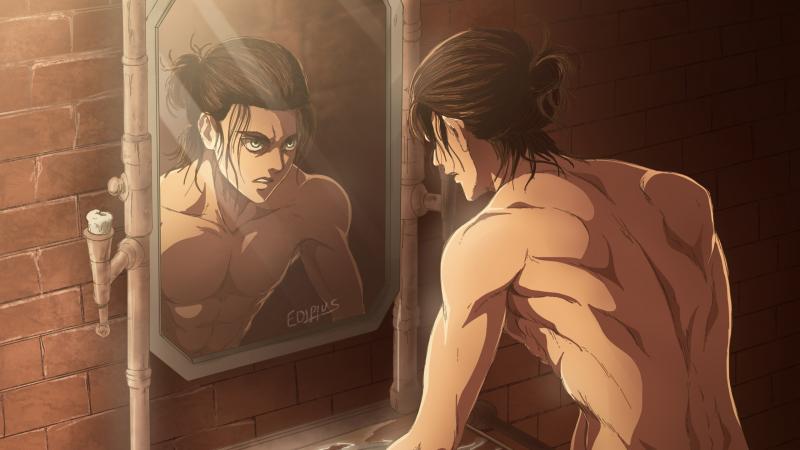
Defense wins championships as they say, so your lacrosse stick better be ready to deliver punishing checks. As an elite defender, a wider head for controlling opponents is your best friend. Let’s break down what you need to dominate between the pipes.
First off, look for a head with a nice wide surface area for in-game checking – we’re talking solid pokes, slaps, lifts and wraps to jar the ball free. The more real estate to make contact, the better.
But don’t go too oversized on head width, or else ball handling will suffer. You still need decent feel for quick outlet passes after causing those turnovers.
For pocket and mesh, focus on easy ground ball scooping versus ball retention. A soft flexible pocket helps secure those 50/50 balls. Just avoid too deep a pocket, making outlet passes a chore.
Wider Heads Load Up Checks
With a wide defensive head, you can absolutely light up dodgers with annihilating checks. We’re talking completely overwhelming their stick for the caused turnover.
All that extra surface area loads insane power into your slashes, especially when paired with a long pole. Your checks will absolutely bowl over anyone in the lanes.
Length Amplifies Checking Power

Speaking of pole length, you want to go super long on defense, like 72 inches. That extra reach amplifies the leverage and whip on checks exponentially.
Picture poking from miles away to surprise attackers and pop the ball free. There’s no escaping your shutdown D with that kind of insane length.
Stick Feel Matters Too
For midfielders, stick feel is crucial since you transition between offense and defense. Look for versatility that gets the job done all over.
The head shape should be decently wide for checking but retain enough ball control too. The mesh and pockets aim for balance as well.
You really need a midrange, do-it-all kind of stick to dominate at midfield.
Offset or Straight Head Shape – Angled for Scooping
Lacrosse head offset refers to the angle of the scoop – is it a flat shape across or does it angle downward?
Heads with lower offset generally have an easier time with ground ball scooping. This is a plus for defenders and midfielders who scrap it up for loose balls.
More offset typically equals better overall ball control, especially around the center sweet spot. So offensive players tend to like a curved offset more.
Lower Offset Lands Cleaner Checks
But less offset also makes landing big clean checks easier, so defenders should look for less angle as well. Picture that flat bottom scoop popping the ball free on checks.
For precision passing, offensive players go for more offset and a deeper pocket to hug the rock. But shallow pockets with minimal offset are best for snagging ground balls.
Women’s Gear Caters to Ball Control
In the women’s game, gear emphasizes ball control and stick skills over power. So heads feature minimal offset for precision passing and shooting.
Pockets are strung tighter and shallower to keep the ball on a string. Excellent finesse but not as much holding power.
Women’s sticks optimize the quickness and coordination that makes the women’s game so fun to watch.
Mesh Type Impacts Ball Control and Holding
The mesh you string your head with affects how the ball sits in the pocket, as well as ball control and feel.
Hard mesh has very minimal flexibility, which optimizes passing speed. But it lacks ball holding power on cradles and moves.
Soft mesh has more give to “bag” the ball in the pocket, excelling at hold. But you lose a bit of velocity on passes and shots.
Tuning Pocket Flexibility

In general, offensive players want softer mesh and pockets to carry and control the ball downfield. Defenders need stiffer mesh for fast outlet passing after turnovers.
Midfielders look for a balance that retains enough hold for offensive runs but still has crisp passing for transition.
You can also fine tune with mesh types like memory mesh that “bags out” over time. Or wax mesh that maintains shape better. Get the right flex.
Women’s Gear Emphasizes Control
Women’s mesh and pockets tend to run towards control over power. So you see tighter stringing and shallower pocket setups.
The ball sits higher in the head, allowing elite stick skills and handling. But you lose some of the hold of a deeper men’s pocket.
Every piece of your stick should complement the finesse needed for women’s lacrosse success.
Budget Considerations – Price Range Variations
Price always affects your lacrosse stick options. Basic wooden shafts with synthetic heads can run under $50 for new players.
Aluminum alloy sticks strung with decent mesh will be the $50 to $100 range typically. These offer good durability and performance.
Once you get above $100, you enter the elite tiers with shafts made of advanced alloys. Lightweight but much greater strength.
Materials Make a Difference
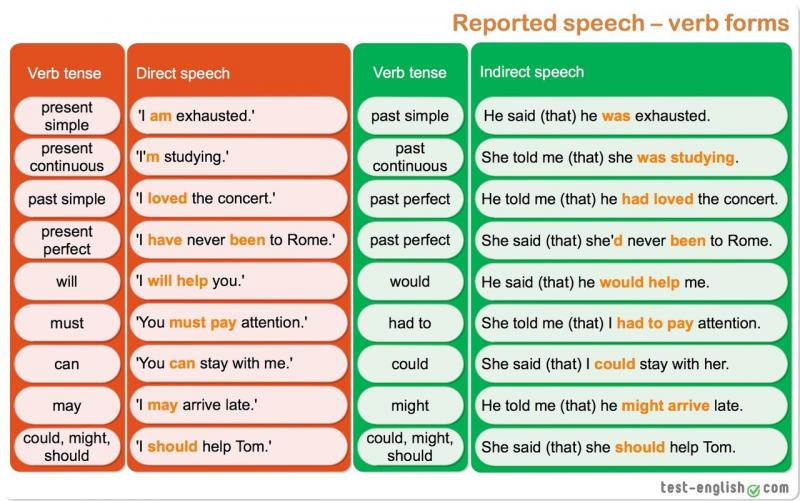
Those premium materials – like scandium, titanium, or composite alloys – provide a big competitive edge. The improved speed, quickness, and power boost any player’s game.
While costlier, advanced lacrosse sticks deliver next level performance. Don’t be afraid to invest more for game changing tech.
Set a budget cap that works for you, but know amazing materials means better production on the field.
Midfield Sticks Offer a Balance of Skills
If you dominate at midfield, your stick needs to bring the heat at both ends. Let’s break down how to pick the perfect middie weapon to transition from lockdown D to wicked offense.
First up, you can’t go as specialized on your head shape and width like attack or defense. As a midfield beast, you need an all-around head to get scrappy on defense but still rifle shots when pushing in transition.
For mesh and stringing, forget a bespoke pocket for offense or defense – you need balance. A medium pocket depth allows pinpoint feeds as well as scooping up ground balls at midfield.
And shaft length should give you range for outlet passes on clears, but quick enough for splitting defenders too. Go for that nice 40-42 inch balance.
Shape Brings Versatility
Your head shape can’t be one-dimensional. You need solid ball retention for offensive runs but also enough width to jostle on checks.
Unless you play specialized offensive or defensive midfield, get an shape right down the middle. Decent width but also enough finesse for passing and shooting.
Pockets Dial In Feel
Midfield pockets are the Goldilocks zone – not too stiff for passing, not too soft for control. Find a hold and release that complements your transition game.
Mesh shouldn’t bag too deep or be trampoline tight. Get the feel that complements those give-and-go dimes as well as securing grounders in the mix.
Length Balances the Needs
Shaft length is your Swiss Army knife. Long poles generate forceful checks but shorter lengths allow quicker footwork and hands.
At midfield, go for 40-42 inches – a nice compromise for clearing rides but also deking past defenders. The best of both worlds!
Pick an Appropriate Head Size – Wider or Narrower

Choosing the ideal head width is key based on your style and position. Here’s how to dial in the perfect dimensions:
In general, offensive players want more narrow heads for precision passing and shooting. Defenders need wider heads to be effective checkers.
Measured at the sidewalls, offensive heads run 5-6 inches usually. Defenders size up 6-8 inches wide typically. Middies split the difference.
Wider Heads Have a Larger Sweet Spot
Wider head shapes naturally have a bigger sweet spot for catching bad passes and feeds on the run. They also tend to be more forgiving when stringing up the pocket.
But narrower heads allow for tighter overall ball control and quick passing through dense traffic. Always a tradeoff!
Women’s Gear Emphasizes Control
For women’s lacrosse, head widths skew narrower for elite stick skills and handling. Pockets are shallower too.
The ball sits higher in the head, enabling next level ball control. But you lose some of the holding power of a deeper pocket.
Every piece of women’s gear focuses on the finesse needed to shine.
Offset or Straight Head Shape – Angled for Scooping

Lacrosse head offset refers to the angle of the scoop – is it flat across or does it curve downward?
Heads with lower offset generally make ground ball scooping much easier. Great for defenders and midfielders who scrap it up.
More offset typically equals better overall ball control, especially around the center sweet spot. So offensive players love offset heads.
Lower Offset Lands Cleaner Checks
But less offset also makes landing big clean checks easier, so defenders should look for less angle too.
For precision passing, offensive players go offset with deeper pockets to hug the ball. But minimal offset excels at ground ball scooping.
Women’s Gear Focuses on Ball Control
In women’s lacrosse, gear emphasizes ball control and finesse over power. So heads have minimal offset for quick, tight passing and shooting.
Pockets are strung tighter and shallower to keep the ball on a string. Excellent control but less holding strength.
Women’s sticks bring the quickness and coordination that defines the women’s game.
Budget Considerations – Price Range Variations
Your lacrosse budget impacts the stick options available. Basic wooden shafts with synthetic heads run under $50.
Aluminum alloy sticks strung with decent mesh are usually $50 to $100. These provide good durability and performance.
High performance sticks over $100 feature advanced alloys like scandium, titanium, or composite shafts. Lightweight but super strong.
Premium Materials Bring Big Performance
Those advanced materials provide a real competitive edge. The improved speed, quickness, and power boost skills across positions.
While pricier, elite lacrosse sticks deliver game changing performance. Invest more to unlock next level play.
Set a budget that works for you, but know that amazing new tech pushes possibilities on the field.
Pick an Appropriate Head Size – Wider or Narrower
Picking the right lacrosse head width is mega important based on your position and style of play. Let’s break down how to choose the ideal dimensions.
Generally, offensive players want more narrow heads for precision shooting and passing. Defenders need wider heads for effective checking and control.
Measured at the sidewalls, offensive heads are typically 5-6 inches wide. Defensive players opt for wider 6-8 inch heads. Midfielders split the difference.
Wider Heads Have a Bigger Sweet Spot
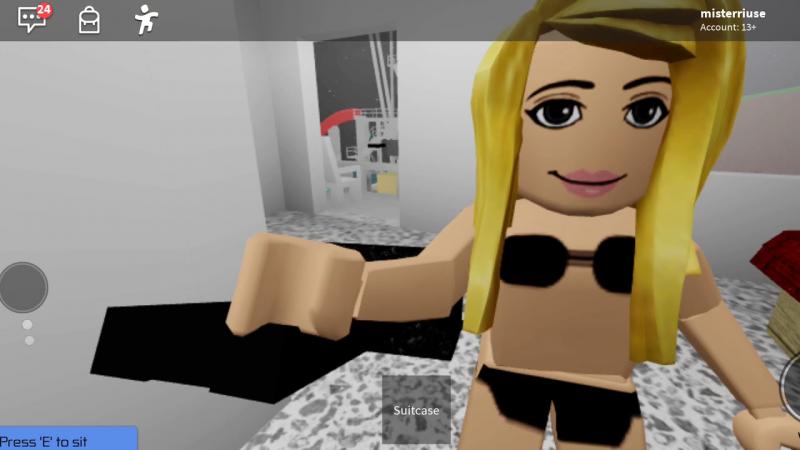
Wider head shapes naturally have a larger sweet spot for snagging off-target feeds. Especially clutch for catching on the run.
They also tend to be more forgiving when stringing up the pocket. Less effort dialing in the channel and whip.
But more narrow heads allow tighter overall ball control and quick fire passing through dense lanes. Tradeoffs!
Women’s Gear Focuses on Control
In women’s lacrosse, head widths skew narrower for elite level ball control and stick skills.
Pockets are strung shallower too, keeping the ball on a string for insane handling. But you lose some holding power.
Every piece of women’s gear focuses on the finesse needed to shine on the field.
Length Matters – Consider a Long or Short Shaft
Your shaft length has a huge impact on your lacrosse game. Shorter 30-32 inch shafts optimize quick shooting and passing.
Long 50-72 inch poles generate leverage for clearing bombs and monster checks. Choose based on speed or power needs.
Short Shafts Bring Quickness

My attack bros live for short 30 inch shafts and the lightning fast release they provide.
Perfect for ducking and deking defenders with tight stick work. Also ideal for wrapping shots on cage.
Want to sauce curvy behind-the-backs? Short sticks give you that quick fire action.
Long Poles Load Up Checks
On defense I roll super long poles for that poke check reach. Extra length loads power for slapping and lifting too.
With a long stick you see the whole field. Shutdown passing lanes all day. And scoop ground balls from miles away.
Offset or Straight Head Shape – Angled for Scooping
Offset refers to the head’s scoop shape – a flat cross section or downward curve.
Low offset heads allow easier ground ball scooping – perfect for defenders and middies.
High offset provides more centered ball control. Ideal for offensive weapons.
Low Offset Lands Cleaner Checks
Less offset also enables big clean checks, so defenders should pursue less angle.
For precision passing, more offset hugs the ball tighter. But shallow pockets excel at ground ball scooping.
Women’s Gear Prioritizes Control
In women’s lacrosse, gear stresses finesse over power. So heads feature minimal offset for quick handles.
Tight shallow pockets keep the ball on a string. Great control but less holding strength.
Women’s sticks bring the coordination that sets the women’s game apart.
Mesh Type Impacts Ball Control and Holding
Your head’s mesh affects ball control, feel, and pocket flexibility.
Hard mesh has minimal give, optimizing passing speed. But it lacks ball holding power.
Soft mesh excels at ball retention on cradles but reduces velocity on releases.
Tuning Mesh to Your Game
Offensive players like soft pockets to carry and move downfield. Defenders need stiff mesh for fast outlet passing.
Midfielders want balance – decent hold but also clean releases in transition. Dial it in.
You can also fine tune with memory or wax mesh. Get the right pocket flex for your game.
Women’s Gear Stresses Control
Women’s mesh and pockets emphasize control over power. You see tight stringing and shallow setups.
The ball sits higher in the head, enabling insane ball handling. But less deep hold than a men’s pocket.
Gear optimized for finesse takes women’s lacrosse play to the next level.
Offset or Straight Head Shape – Angled for Scooping
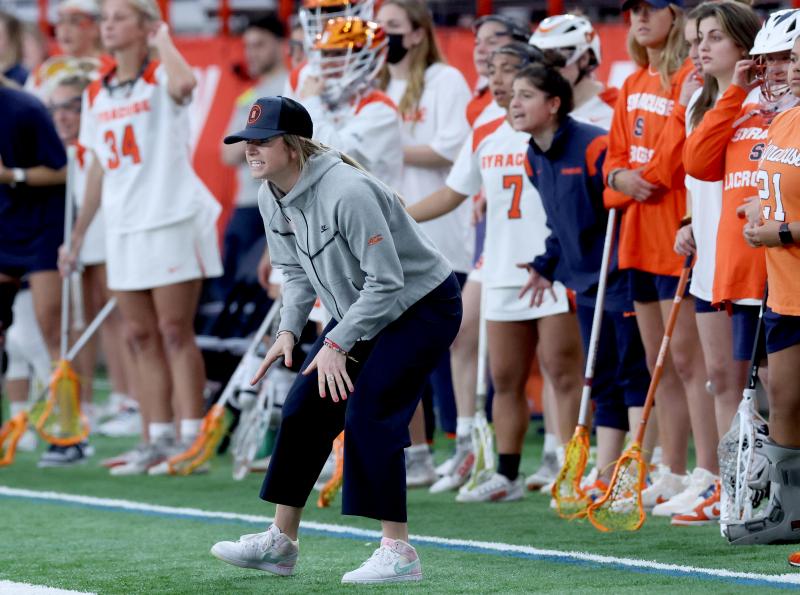
When picking a new lacrosse head, offset is a key factor you need to consider. Offset refers to the angle of the scoop – is it flat across or does it curve downward?
Heads with lower offset generally allow for easier ground ball scooping. This is a major plus for defenders and midfielders who scrap it up chasing loose balls.
More offset typically equals better overall ball control and feel, especially around the center sweet spot. So offensive players tend to prefer an angled, curved offset more.
Lower Offset Lands Cleaner Checks
But less offset also makes it easier to land big booming checks and dislodge the ball. So defenders should look for less angle and offset as well.
Picture that flat bottom scoop popping the ball free on poke checks and lifts. A defender’s dream!
For precision passing, offensive players go for more offset and deeper pockets to really hug the ball tight. But minimal offset excels at ground ball scooping.
Women’s Gear Focuses on Ball Control

In women’s lacrosse, where finesse and stick skills reign supreme, gear engineering emphasizes ball control over power. So heads feature minimal offset for quicker, tighter passing and shooting.
Pockets are strung tighter and shallower to keep the ball on a string. This enables excellent control, but with less holding strength in the pocket.
Women’s sticks bring the quickness, coordination, and elite hands that set the women’s game apart.
Length Matters – Consider a Long or Short Shaft
Your lacrosse shaft length plays a huge role in your performance on the field. Shorter 30-32 inch shafts optimize quick stick handling and passing.
Long 50-72 inch poles generate leverage for clearing bombs downfield and monster checks defensively. Choose wisely based on speed or power.
Short Shafts Bring Quickness
My attack bros swear by using short 30 inch shafts for lighting fast shooting and release.
It’s perfect for dodging defenders with tight stick work and wraps around the crease. Ideal for getting off wicked curvy behind-the-backs too.
Want to absolutely singe top corners with your shot? Go shorty for speed.
Long Poles Load Up Checks
On defense I roll super long poles, like 72 inches, for that elite poke check reach. The extra length loads insane power on slashes and lifts too.
With a long stick you see the whole field. Shutdown passing lanes all day. And scoop ground balls from miles away.
Mesh Type Impacts Ball Control and Holding
The mesh you string your lacrosse head with affects how the ball sits in the pocket, as well as overall ball control and feel.
Harder mesh has very minimal flexibility, which optimizes passing speed. But it lacks ball holding power on cradles and moves.
Softer mesh excels at ball retention in the pocket on carries, but you lose a bit of velocity on passes and shots.
Tuning Pocket Flexibility
Generally, offensive players want softer mesh and pockets to calmly carry and move the ball downfield. Defenders need stiffer mesh for fast outlet passing after causing those turnovers.
Midfielders look for a balance that retains decent hold for offensive runs but still has crisp passing for transition play.
You can also fine tune with specialty mesh types like memory mesh that “bags out” over time. Get the right pocket flex.
Women’s Gear Stresses Control
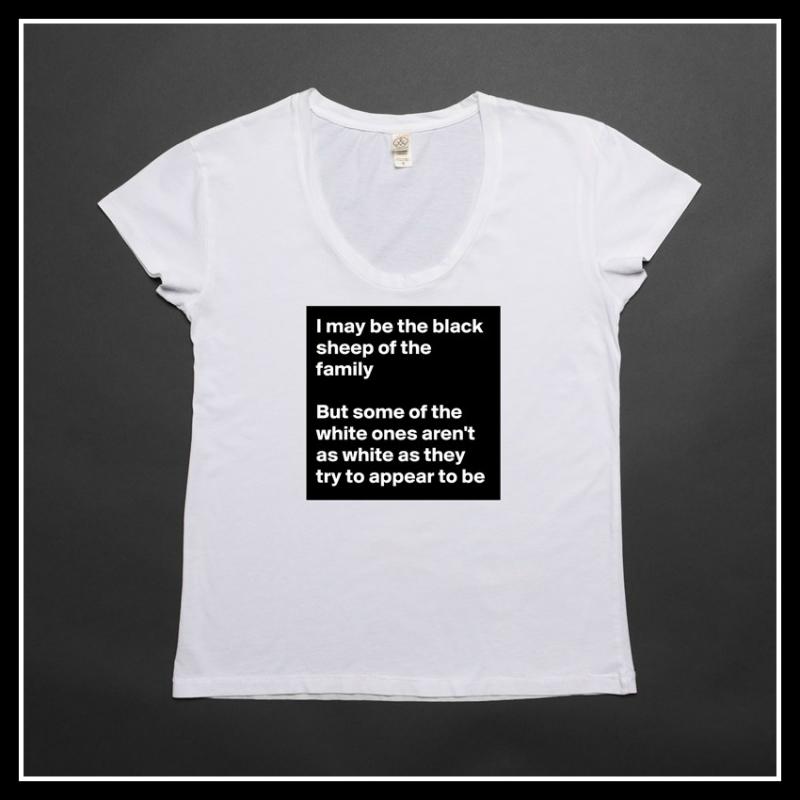
Women’s lacrosse mesh and pocket stringing tends to emphasize control over pure power. So you see tighter stringing and shallower pocket setups.
This allows the ball to sit higher in the head, enabling insane ball handling skills. But with less of the deep ball hold of a men’s stick.
Every piece of women’s gear is optimized for the finesse and quickness that makes women’s lacrosse magical.
Mesh Type Impacts Ball Control and Holding
The type of mesh you string your lacrosse head with plays a big role in overall ball control, feel, and flexibility of the pocket. Let’s break down how mesh impacts your game.
Harder mesh has very minimal flexibility, which optimizes passing speed and velocity. But it lacks ball holding power on cradles, scoops, and moves.
Softer mesh excels at ball retention in the pocket on carries upfield, but you lose a bit of speed on release for passes and shots.
Tuning Pocket Flexibility
In general, offensive players want softer mesh and pocket stringing to calmly carry and move the ball around the field. Defenders need stiffer mesh pockets for quick outlet passing after securing those turnovers.
Midfielders look for a balance that retains decent ball hold for offensive runs but still has crisp passing release for fast transition play.
You can also fine tune with specialty mesh types like memory mesh that gradually “bags out” over time. Get the right amount of flex.
Women’s Gear Stresses Control
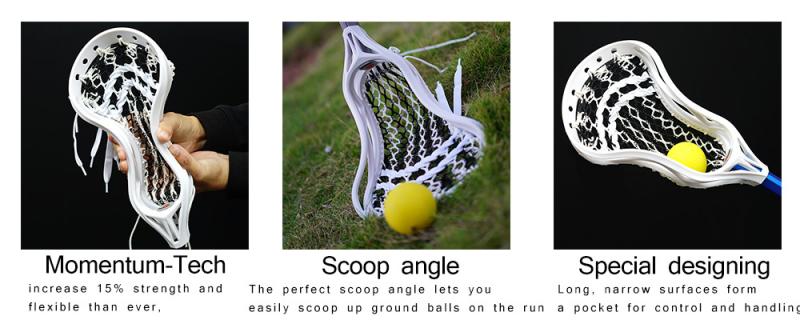
In women’s lacrosse, mesh and pocket stringing tends to emphasize finesse control over pure power. So you typically see tighter stringing and shallower pocket setups.
This allows the ball to sit higher in the head, enabling insane ball handling skills. But with less of the deep ball hold power of a men’s stick.
Every piece of women’s gear is optimized for the quickness and coordination that sets women’s lacrosse apart.
Length Matters – Consider a Long or Short Shaft
Your lacrosse shaft length plays a huge role in your performance. Shorter 30-32 inch shafts allow the quickest shooting, passing, and stick work.
Longer 50-72 inch poles generate major leverage for clearing bombs and monster checks. Choose wisely based on needs.
Short Shafts Bring Quickness
My attack bros swear by short 30 inch shafts for lighting fast shooting and release.
It’s perfect for dodging defenders with tight stick work. Also ideal for wrapping shots on cage from X.
Want to absolutely singe corners with your shot? Go shorty for speed.
Long Poles Load Up Checks
On defense I roll super long poles, like 72 inches, for that elite poke check reach. The extra length loads insane power on lifts and slashes too.
With a long stick you see the whole field. Shutdown passing lanes all day. And scoop ground balls from outer space.
Offset or Straight Head Shape – Angled for Scooping
Offset refers to the scoop’s shape – flat across or curved downward?
Low offset heads allow easier ground ball scooping – perfect for defenders and middies.
High offset provides more centered ball control. Ideal for offensive weapons.
Low Offset Lands Cleaner Checks
Less offset also enables big clean checks, so defenders should pursue less angle.
For precision passing, more offset hugs the ball tighter. But shallow pockets excel at ground ball scooping.
Women’s Gear Prioritizes Control
In women’s lacrosse, gear stresses finesse over power. So heads feature minimal offset for quick handles.
Tight shallow pockets keep the ball on a string. Great control but less holding strength.
Women’s sticks bring the coordination that sets the women’s game apart.
Pick an Appropriate Head Size – Wider or Narrower

Picking head width is key based on your position and style.
Offensive players want narrow heads for precision. Defenders need wider heads to check effectively. Middies balance both.
Measured at the sidewalls, offensive heads are 5-6 inches usually. Defenders go 6-8 inches wider typically.
Wider Heads Have a Larger Sweet Spot
Wider heads naturally have a bigger sweet spot, especially for catching bad passes.
They also tend to be more forgiving when stringing up the pocket. Less tuning needed.
But more narrow heads allow tighter ball control and quick passing through lanes. Tradeoffs!
Pocket Placement Affects Throwing and Passing
The exact placement and depth of your lacrosse stick’s pocket has a big influence on throwing, passing, and shooting performance. Let’s break down how to dial it in.
In simple terms, a pocket strung to be lower in the head leads to harder but slightly slower throwing and shooting. The deeper the pocket, the more force but reduced speed on release.
Pocket placement also affects general ball control. A centered pocket gives the most balanced feel and control over the ball. An off-center pocket shifts the ball’s sweet spot either high or low, adding whip bias.
Tuning the Pocket for Your Game
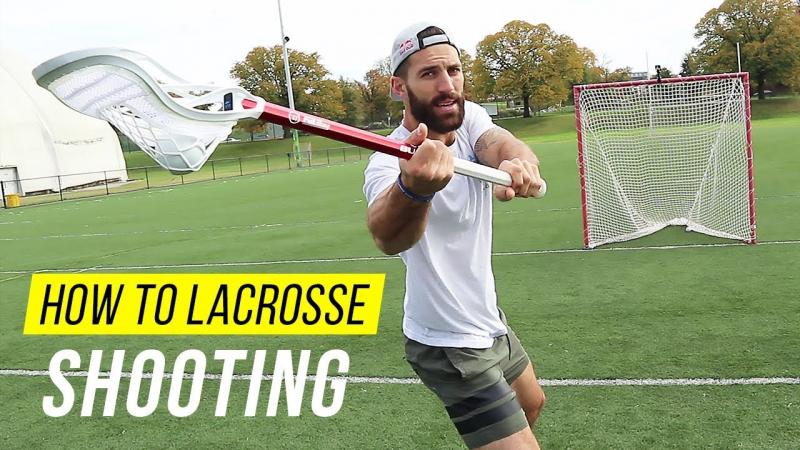
Based on your playing style, you can tune the pocket placement to match. Attackers may favor a lower pocket for added hold and power winding up from X. Midfielders want balanced placement for quick sticks on the split.
If you like to roll right on shots, shift the pocket lower right. This puts more natural whip on your dominant side. Really make the pocket placement enhance your game.
Women’s Gear Stresses Control
In women’s lacrosse gear, pockets are typically strung higher in the head to enable insane ball control and handling.
The ball sits centered and ready for precision passing or catching feeds on the fly. But you lose some of the powerful hold of a deeper men’s pocket.
Control and finesse win out in optimizing women’s lacrosse sticks.
Length Matters – Consider a Long or Short Shaft
Your lacrosse shaft length has a huge impact on performance. Short 30-32 inch shafts optimize fast shooting and passing.
Long 50-72 inch poles generate leverage for clearing and checks. Choose wisely based on speed or power needs.
Short Shafts Bring Quickness
My attack bros swear by short 30 inch shafts for lighting fast shooting and release.
Perfect for dodging defenders with tight stick work. Ideal for wrapping shots on cage too.
Want to absolutely singe top corners? Go short for speed.
Long Poles Load Up Checks
On defense I roll super long poles, like 72 inches, for that elite poke check reach. Extra length loads power on lifts and slashes too.
With a long stick you see the whole field. Shutdown passing lanes all day. And scoop ground balls from miles away.
Offset or Straight Head Shape – Angled for Scooping
Offset refers to the scoop’s shape – flat across or curved downward?
Low offset heads allow easier ground ball scooping – perfect for defenders and middies.
High offset provides more centered ball control. Ideal for offensive weapons.
Low Offset Lands Cleaner Checks
Less offset also enables big clean checks, so defenders should pursue less angle.
For precision passing, more offset hugs the ball tighter. But shallow pockets excel at ground ball scooping.
Women’s Gear Prioritizes Control

In women’s lacrosse, gear stresses finesse over power. So heads feature minimal offset for quick handles.
Tight shallow pockets keep the ball on a string. Great control but less holding strength.
Women’s sticks bring the coordination that sets the women’s game apart.
Mesh Type Impacts Ball Control and Holding
Your head’s mesh affects control, feel, and pocket flex.
Hard mesh optimizes passing speed. But it lacks ball holding power.
Soft mesh excels at ball retention in the pocket but reduces velocity on release.
Tuning Pocket Flexibility
Offensive players like soft pockets to carry. Defenders need stiff mesh for fast outlet passing.
Midfielders want balance – decent hold but also clean releases in transition. Dial it in.
Specialty mesh like memory mesh fine tunes pocket flex over time. Get the right feel.
Women’s Gear Stresses Control
Women’s pockets emphasize control over power. You see tight stringing and shallow setups.
The ball sits higher, enabling insane ball handling. But less deep hold than a men’s pocket.
Gear optimized for finesse takes women’s play to the next level.
Stiffness of Shaft Influences Power and Feel

The stiffness and flex profile of your lacrosse shaft impacts the overall feel, power generation, and performance. Let’s break down how shaft materials influence your game.
Basic shafts made from standard alloys like aluminum have less flex and whip. This delivers stability but reduces touch on passes and cradle moves.
Advanced shafts using alloys like scandium, titanium, or composite polymers have tuned flex profiles. This offers a blend of stability and finesse for elite level response.
Balance Power and Touch Needs
In general, attackers may favor more flexible shafts that maximize feel for quick stick passes and shots on the crease. Defenders need extra stiffness for power when thrusting checks.
Midfielders benefit from a balanced flex that maintains touch on feeds in transition but can also wind up on clearing runs.
Match your shaft to the right blend of touch and power your position demands.
Women’s Gear Focuses on Quickness
For women’s lacrosse, gear favors lightweight flexible shafts for excellent ball control and handling.
The focus is on fast dynamic play and quick stick skills. Stiff, bulky shafts would slow that down.
Manufacturers continue to engineer sticks to optimize the speed and finesse of women’s lacrosse.
Length Matters – Consider a Long or Short Shaft
Your lacrosse shaft length impacts performance. Short 30-32 inch shafts allow the fastest shooting and passing.
Long 50-72 inch poles generate leverage for clearing bombs and checks. Choose based on needs.
Short Shafts Bring Quickness
My attack bros swear by short 30 inch shafts for lighting fast shooting.
Perfect for dodging defenders with tight stick work. Ideal for wrapping shots on cage too.
Want to absolutely singe corners? Go short for speed.
Long Poles Load Up Checks
On defense I roll super long poles, like 72 inches, for that elite poke check reach. Extra length loads insane power on checks.
With a long stick you see the whole field. Shutdown passing lanes all day. Scoop ground balls from miles away.
Offset or Straight Head Shape – Angled for Scooping
Offset refers to the scoop’s shape – flat across or curved downward?
Low offset heads allow easier ground ball scooping – great for defenders and middies.
High offset provides more centered ball control. Ideal for offensive weapons.
Low Offset Lands Cleaner Checks

Less offset also enables big clean checks, so defenders should pursue less angle.
For precision passing, more offset hugs the ball tighter. Shallow pockets excel at ground ball scooping.
Women’s Gear Prioritizes Control
In women’s lacrosse, gear stresses finesse over power. Minimal offset enables quick handles.
Tight shallow pockets keep the ball on a string. Excellent control.
Women’s sticks bring the coordination that sets the women’s game apart.
Mesh Type Impacts Ball Control and Holding
Your head’s mesh affects control, feel, and pocket flex.
Hard mesh optimizes passing speed. But it lacks ball holding power.
Soft mesh excels at ball retention in the pocket but reduces velocity on release.
Tuning Pocket Flexibility
Offensive players like soft pockets to carry. Defenders need stiff mesh for fast outlet passing.
Midfielders want balance – decent hold but also clean releases in transition. Dial it in.
Specialty mesh like memory mesh fine tunes flex over time. Get the right feel.
Women’s Gear Stresses Control
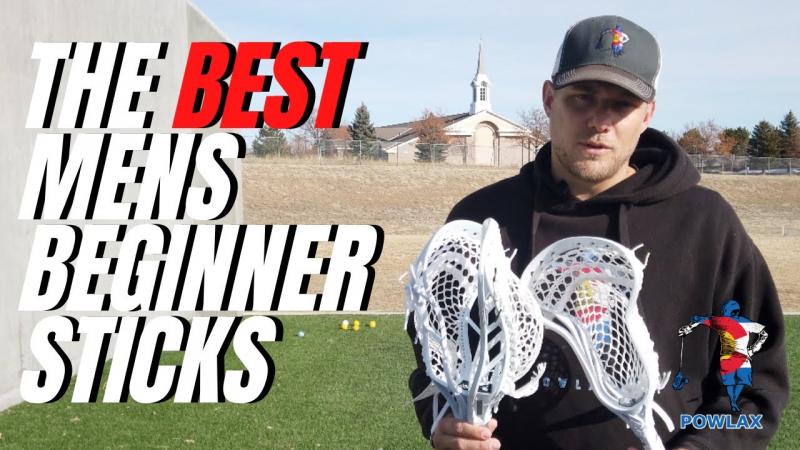
Women’s pockets emphasize control over power. You see tight stringing and shallow setups.
The ball sits higher, enabling insane ball handling. But less deep hold than a men’s pocket.
Optimized gear takes women’s play to the next level.
Weight Distribution for Optimized Performance
The weight balance and distribution of your lacrosse stick has a big impact on overall feel and performance. Manufacturers carefully engineer sticks to optimize weight for specific positions and styles of play.
For defenders, lacrosse heads are weighted to be bottom-heavy. This shifts maximum mass down low, increasing power on checks, pokes, slashes, and lifts intended to dislodge the ball.
On offensive sticks, extra weight is distributed up top near the scoop. This lightens the bottom for quicker handling, passing, and shooting.
Find Your Ideal Balance Point
When shopping for a new stick, pay attention to how the weight is balanced. Ask yourself if it matches your needs and style of play for your position.
Go for a stick weighted to really complement how you play – don’t just choose generically. Having the ideal balance point can give you that extra competitive edge.
A perfectly balanced lacrosse stick should feel like an extension of your arm.
Women’s Gear Focuses on Quickness
Women’s sticks keep overall weight low to enable fast dynamic play. Extra mass is minimized to sharpen cuts, accelerate passes, and maximize agility.
Since women’s lacrosse emphasizes finesse and footwork over power, lightweight gear enhances the pace and coordination of play.
Manufacturers engineer women’s lacrosse gear for lightning quick handling.
Length Matters – Consider a Long or Short Shaft
Your lacrosse shaft length impacts performance. Short 30-32 inch shafts allow the fastest shooting and passing.
Long 50-72 inch poles generate leverage for clearing bombs and checks. Choose wisely based on needs.
Short Shafts Bring Quickness
My attack bros swear by short 30 inch shafts for lighting fast shooting.
Perfect for dodging defenders with tight stick work. Ideal for wrapping shots on cage too.
Want to absolutely singe corners? Go short for speed.
Long Poles Load Up Checks
On defense I roll super long poles, like 72 inches, for that elite poke check reach. Extra length loads insane power on checks.
With a long stick you see the whole field. Shutdown passing lanes all day. Scoop ground balls from miles away.
Offset or Straight Head Shape – Angled for Scooping
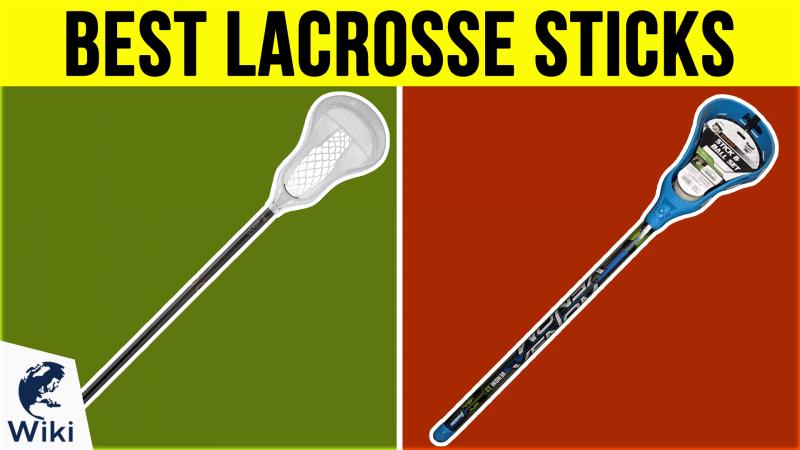
Offset refers to the scoop’s shape – flat across or curved downward?
Low offset heads allow easier ground ball scooping – perfect for defenders and middies.
High offset provides more centered ball control. Ideal for offensive weapons.
Low Offset Lands Cleaner Checks
Less offset also enables big clean checks, so defenders should pursue less angle.
For precision passing, more offset hugs the ball tighter. Shallow pockets excel at ground ball scooping.
Women’s Gear Prioritizes Control
In women’s lacrosse, gear stresses finesse over power. Minimal offset enables quick handles.
Tight shallow pockets keep the ball on a string. Excellent control.
Women’s sticks bring the coordination that sets the women’s game apart.
Mesh Type Impacts Ball Control and Holding
Your head’s mesh affects control, feel, and pocket flex.
Hard mesh optimizes passing speed. But it lacks ball holding power.
Soft mesh excels at ball retention in the pocket but reduces velocity on release.
Tuning Pocket Flexibility

Offensive players like soft pockets to carry. Defenders need stiff mesh for fast outlet passing.
Midfielders want balance – decent hold but also clean releases in transition. Dial it in.
Specialty mesh like memory mesh fine tunes flex over time. Get the right feel.
Women’s Gear Stresses Control
Women’s pockets emphasize control over power. You see tight stringing and shallow setups.
The ball sits higher, enabling insane ball handling. But less deep hold than a men’s pocket.
Optimized gear takes women’s play to the next level.
Material Matters – Scandium/Titanium vs Aluminum Alloys
The materials used in your lacrosse stick construction make a big difference in performance. Advanced alloys provide huge advantages over basic metals like aluminum.
Premium alloys like scandium, titanium, and composite polymers offer superior strength at much lower weight. This improves handling, acceleration, and ball velocity.
Standard aluminum alloy shafts are affordable but lack the strength, flexibility, and lightweight feel of elite materials. Go premium for a competitive edge.
Cutting Edge Materials Up Your Game
Scandium alloy shafts provide insane strength at around 40% less weight than aluminum. The ultra light feel supercharges your stick skills.
Titanium alloys boast similar strength-to-weight benefits. Though costlier, these pro-grade sticks deliver game changing performance.
Carbon fiber composites blend lightweight polymers with alloy matrices for exceptional snappy power. The future of lacrosse gear engineering.
Women’s Gear Demands Lightweight Strength
For women’s lacrosse, elite composite and alloy materials enable maximum ball control with minimum fatigue. Since finesse dominates, lightweight strength is key.
New high-end women’s shafts shave ounces while maintaining stiffness for crisp passing. Hands down the best materials available.
Manufacturers push material tech to optimize women’s lacrosse athleticism and mobility.
Offset or Straight Head Shape – Angled for Scooping
Offset refers to the scoop’s shape – flat across or curved downward?
Low offset heads allow easier ground ball scooping – perfect for defenders and middies.
High offset provides more centered ball control. Ideal for offensive weapons.
Low Offset Lands Cleaner Checks
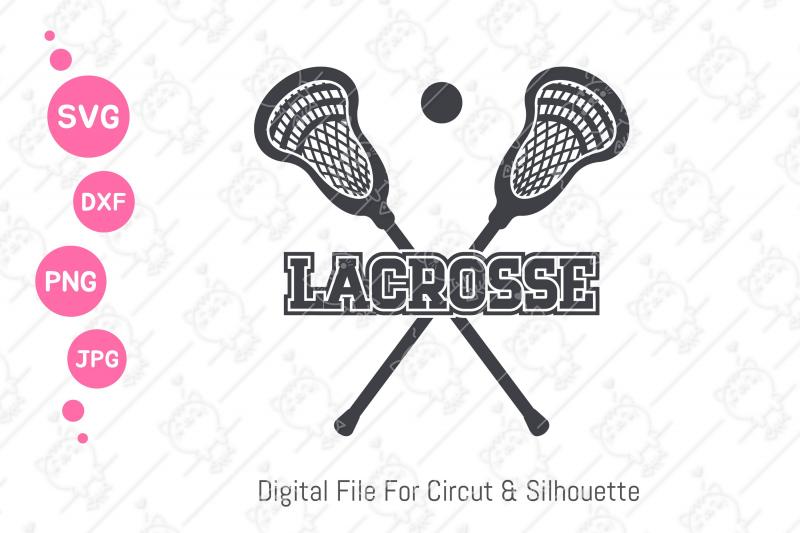
Less offset also enables big clean checks, so defenders should pursue less angle.
For precision passing, more offset hugs the ball tighter. Shallow pockets excel at ground ball scooping.
Women’s Gear Prioritizes Control
In women’s lacrosse, gear stresses finesse over power. Minimal offset enables quick handles.
Tight shallow pockets keep the ball on a string. Excellent control.
Women’s sticks bring the coordination that sets the women’s game apart.
Length Matters – Consider a Long or Short Shaft
Your lacrosse shaft length impacts performance. Short 30-32 inch shafts allow the fastest shooting and passing.
Long 50-72 inch poles generate leverage for clearing bombs and checks. Choose wisely based on needs.
Short Shafts Bring Quickness
My attack bros swear by short 30 inch shafts for lighting fast shooting.
Perfect for dodging defenders with tight stick work. Ideal for wrapping shots on cage too.
Want to absolutely singe corners? Go short for speed.
Long Poles Load Up Checks
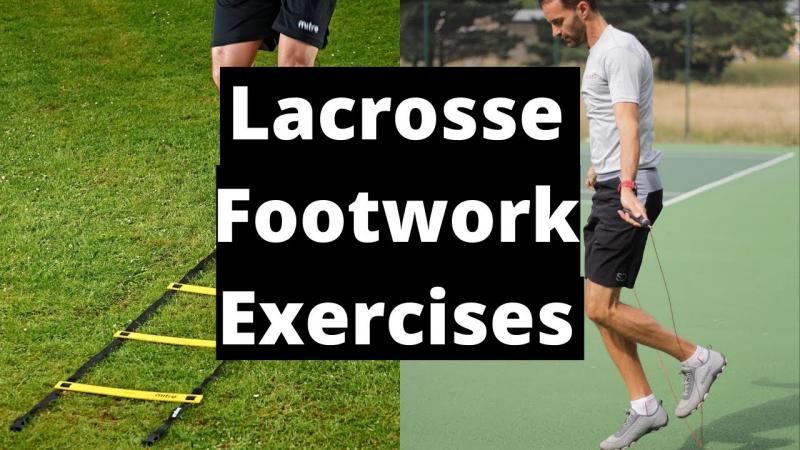
On defense I roll super long poles, like 72 inches, for that elite poke check reach. Extra length loads insane power on checks.
With a long stick you see the whole field. Shutdown passing lanes all day. Scoop ground balls from miles away.
Mesh Type Impacts Ball Control and Holding
Your head’s mesh affects control, feel, and pocket flex.
Hard mesh optimizes passing speed. But it lacks ball holding power.
Soft mesh excels at ball retention in the pocket but reduces velocity on release.
Tuning Pocket Flexibility
Offensive players like soft pockets to carry. Defenders need stiff mesh for fast outlet passing.
Midfielders want balance – decent hold but also clean releases in transition. Dial it in.
Specialty mesh like memory mesh fine tunes flex over time. Get the right feel.
Women’s Gear Stresses Control
Women’s pockets emphasize control over power. You see tight stringing and shallow setups.
The ball sits higher, enabling insane ball handling. But less deep hold than a men’s pocket.
Optimized gear takes women’s play to the next level.
Grip Style Impacts Comfort and Control
Your lacrosse shaft’s grip affects overall comfort, control, and handling. Don’t overlook this important piece of your stick’s construction.
Basic grip textures provide adequate grab on the shaft, but can get slick with sweat during intense gameplay. For superior control, look for advanced grip patterns molded right into the shaft material.
Rubber shrink tube grips add cushioning, but their extra weight down low can feel clunky. Overmolded integrated grips fuse cushioning rubber into the shaft without adding mass.
Get a Grip That Suits Your Game
Grip style comes down to personal preference and finding the right tactile connection to your stick. But choose one that’s lightweight, non-slip, and really enhances your lacrosse game.
A grip that locks your hands in place and becomes one with your stick will boost comfort, command, and performance.
Women’s Gear Promotes Lightweight Control
For women’s lacrosse, gear keeps weight low for fast dynamic play. So bulky grip tape down low gets avoided.
Clean integrated grips add control without compromising quickness and agility. Excellent touch for elite stick skills.
Manufacturers continue pushing lacrosse tech to new levels.
Length Matters – Consider a Long or Short Shaft
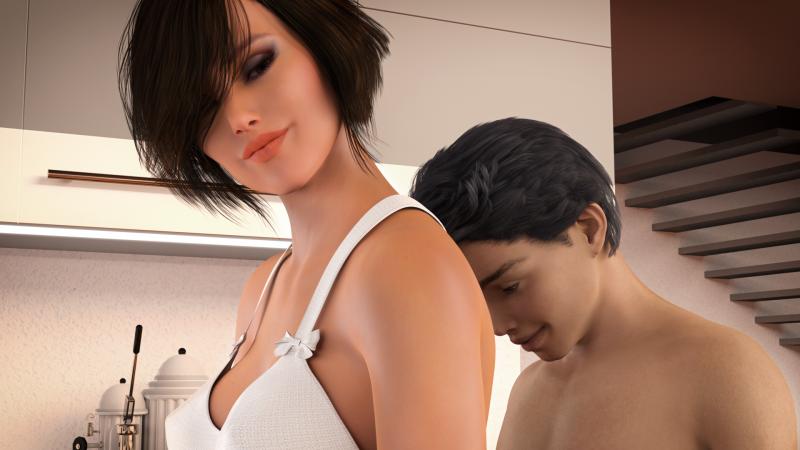
Your lacrosse shaft length impacts performance. Short 30-32 inch shafts allow the fastest shooting and passing.
Long 50-72 inch poles generate leverage for clearing bombs and checks. Choose based on needs.
Short Shafts Bring Quickness
My attack bros swear by short 30 inch shafts for lighting fast shooting.
Perfect for dodging defenders with tight stick work. Ideal for wrapping shots on cage too.
Want to absolutely singe corners? Go short for speed.
Long Poles Load Up Checks
On defense I roll super long poles, like 72 inches, for that elite poke check reach. Extra length loads insane power on checks.
With a long stick you see the whole field. Shutdown passing lanes all day. Scoop ground balls from miles away.
Offset or Straight Head Shape – Angled for Scooping
Offset refers to the scoop’s shape – flat across or curved downward?
Low offset heads allow easier ground ball scooping – perfect for defenders and middies.
High offset provides more centered ball control. Ideal for offensive weapons.
Low Offset Lands Cleaner Checks

Less offset also enables big clean checks, so defenders should pursue less angle.
For precision passing, more offset hugs the ball tighter. Shallow pockets excel at ground ball scooping.
Women’s Gear Prioritizes Control
In women’s lacrosse, gear stresses finesse over power. Minimal offset enables quick handles.
Tight shallow pockets keep the ball on a string. Excellent control.
Women’s sticks bring the coordination that sets the women’s game apart.
Mesh Type Impacts Ball Control and Holding
Your head’s mesh affects control, feel, and pocket flex.
Hard mesh optimizes passing speed. But it lacks ball holding power.
Soft mesh excels at ball retention in the pocket but reduces velocity on release.
Tuning Pocket Flexibility
Offensive players like soft pockets to carry. Defenders need stiff mesh for fast outlet passing.
Midfielders want balance – decent hold but also clean releases in transition. Dial it in.
Specialty mesh like memory mesh fine tunes flex over time. Get the right feel.
Women’s Gear Stresses Control
Women’s pockets emphasize control over power. You see tight stringing and shallow setups.
The ball sits higher, enabling insane ball handling. But less deep hold than a men’s pocket.
Optimized gear takes women’s play to the next level.
Budget Considerations – Price Range Variations
Price always affects the lacrosse stick options available to players. But investing more can provide real competitive advantages on the field.
Basic wooden shafts with synthetic heads can run under $50, offering entry level performance for new players. Step up to aluminum alloy sticks strung with decent mesh in the $50 to $100 range.
Once you get above $100, you enter the elite tiers featuring shafts made of advanced scandium, titanium, and composite alloys. While costlier, these provide game changing performance.
Premium Materials Make a Difference
Those advanced construction materials result in superior strength, lower weight, and insane ball velocities. The increased speed, quickness, and power boost any player’s skills.
While pricier than basics, premium lacrosse sticks deliver the edge you need to dominate. Don’t be afraid to invest more in the top tech.
Set a budget cap that works for you, but know that amazing new materials are pushing possibilities on the field.
Women’s Gear Demands Lightweight Strength

For women’s lacrosse, premium alloys enable maximum ball control with minimum fatigue. Since finesse rules, lightweight strength is crucial.
New elite women’s shafts shave ounces while maintaining stiffness for precise passing. Definitely get high-end construction.
Manufacturers keep pushing women’s gear engineering to increase athleticism and mobility.
Length Matters – Consider a Long or Short Shaft
Your lacrosse shaft length impacts performance. Short 30-32 inch shafts allow the fastest shooting and passing.
Long 50-72 inch poles generate leverage for clearing bombs and checks. Choose based on needs.
Short Shafts Bring Quickness
My attack bros swear by short 30 inch shafts for lighting fast shooting.
Perfect for dodging defenders with tight stick work. Ideal for wrapping shots on cage too.
Want to absolutely singe corners? Go short for speed.
Long Poles Load Up Checks
On defense I roll super long poles, like 72 inches, for that elite poke check reach. Extra length loads insane power on checks.
With a long stick you see the whole field. Shutdown passing lanes all day. Scoop ground balls from miles away.
Offset or Straight Head Shape – Angled for Scooping

Offset refers to the scoop’s shape – flat across or curved downward?
Low offset heads allow easier ground ball scooping – perfect for defenders and middies.
High offset provides more centered ball control. Ideal for offensive weapons.
Low Offset Lands Cleaner Checks
Less offset also enables big clean checks, so defenders should pursue less angle.
For precision passing, more offset hugs the ball tighter. Shallow pockets excel at ground ball scooping.
Women’s Gear Prioritizes Control
In women’s lacrosse, gear stresses finesse over power. Minimal offset enables quick handles.
Tight shallow pockets keep the ball on a string. Excellent control.
Women’s sticks bring the coordination that sets the women’s game apart.
Mesh Type Impacts Ball Control and Holding
Your head’s mesh affects control, feel, and pocket flex.
Hard mesh optimizes passing speed. But it lacks ball holding power.
Soft mesh excels at ball retention in the pocket but reduces velocity on release.
Tuning Pocket Flexibility
Offensive players like soft pockets to carry. Defenders need stiff mesh for fast outlet passing.
Midfielders want balance – decent hold but also clean releases in transition. Dial it in.
Specialty mesh like memory mesh fine tunes flex over time. Get the right feel.
Women’s Gear Stresses Control
Women’s pockets emphasize control over power. You see tight stringing and shallow setups.
The ball sits higher, enabling insane ball handling. But less deep hold than a men’s pocket.
Optimized gear takes women’s play to the next level.
Try Before You Buy – Demo at a Lacrosse Store
Need a new lacrosse stick this season? With so many options on the market, it can be tough to know where to start when shopping for a new lacrosse stick. From different head shapes to various shaft materials, there’s a lot to consider beyond just brand name and price point. That’s why trying before you buy by demoing lacrosse sticks at your local lacrosse store is so valuable. Test driving different lacrosse sticks allows you to get a true feel for what works best for your position, skill level, and preferences.
When demoing lacrosse sticks, one of the first things to look at is the head shape. There are generally three types of head shapes in lacrosse: pointed, curved, and oval. Pointed heads have a narrower scoop and help generate more whip on shots, making them a popular choice for attackmen. Curved heads have a wider face shape and shallower pocket, ideal for midfielders who need excellent ball control for handling and passing. Oval orround heads offer a versatile middle ground with a little more hold than a curved head but more shot speed than a pointed head.
The width and depth of the scoop can also impact passing, catching, and ball retention. A wider and deeper scoop gives you more control over errant passes and makes it easier to direct ground balls right into the pocket. But a shallow, narrow scoop generates quicker release speeds for crisp, accurate passes. Determine whether control or speed is more important for your position and playing style.
Pocket type and placement are other key differentiators when demoing lacrosse heads. Mesh pockets and traditional leathers offer more customizable stringing options but generally have a longer break-in time. Manufactured and pre-strung pockets are ready to use right away but offer less ability to tweak the pocket to your preferences over time. Think about where you tend to carry the ball in your stick and try heads with pocket placements to match – lower for handling and quick sticks, higher for ripping high-to-low shots.
Beyond the head, also pay attention to the shaft material and flex profile when trying out new lacrosse sticks. Composite shafts made from materials like Scandium or Carbon fiber offer an excellent strength-to-weight ratio but come with a higher price tag. More affordable alloy shafts like aluminum can dent or bend over time but provide great durability for the cost. Titanium alloys strike a nice balance between the two. Make sure to find the right amount of flex that suits your playing style – more flex helps add whip on passes and shots but can reduce stability in physical play.
Attackmen

For attackmen looking for new lacrosse sticks, focus your search on heads and shafts that provide excellent feel, quick passing, and finesse shooting. Pointed lacrosse heads give you better torque for adding whip on shots. Skinny alloy or composite shafts offer nice flex without sacrificing ball control. Attackmen tend to carry lower on the head, so choose a pocket with a mid to low placement.
Middies
As a midfielder, prioritize lacrosse sticks with excellent scooping, passing, and handling abilities. Curved heads give you a nice wide scoop area for gobbling up ground balls and provide great hold across the entire head for all-around play. A composite shaft delivers a great feel without slowing your hands down like an alloy handle would. Since middies tend to carry higher up on the stick, a mid to high pocket helps.
Defenders
For defensemen, ground ball scooping and checking abilities are most important when selecting a new lacrosse stick. Oval or round heads give you a nice blend of ball retention and shooting performance. Full alloy shafts add stiffness for better checking. A lower pocket placement helps defenders maintain control of the ball down low.
Trying out lacrosse sticks before buying gives you the chance to test out different specs and find the best match for your preferences and playing style. Don’t hesitate to demo different heads, pocket placements, and shaft materials from a variety of brands. Take note of what you like and dislike about each stick you try. Narrow down the factors most important to you – passing, shooting, scooping, stiffness, etc. Finding the lacrosse stick that feels right in your hands will give you the confidence and control needed to elevate your game this season.